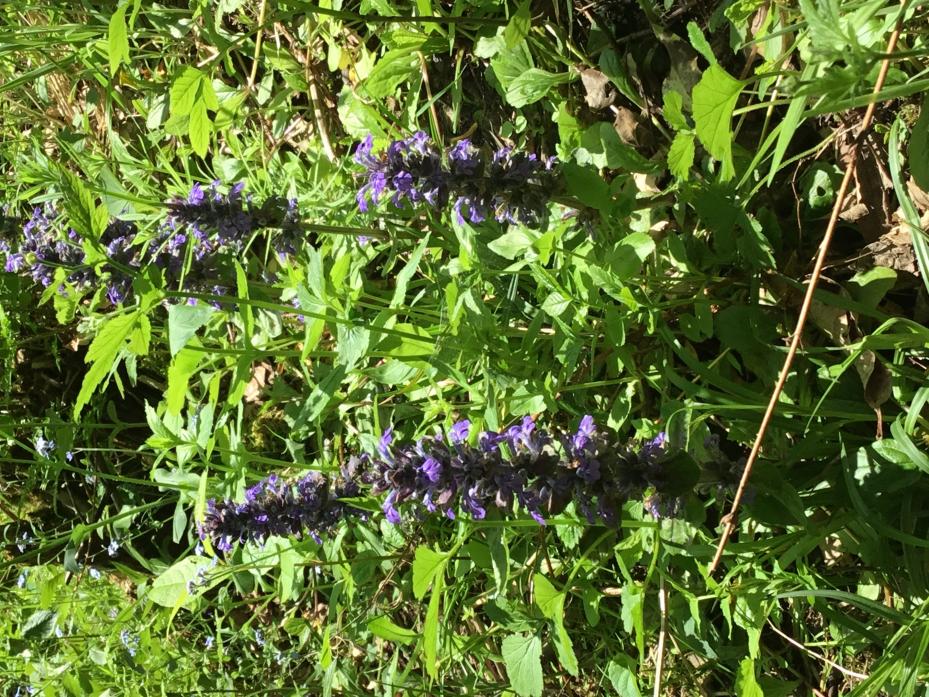
Bugle Ajuga reptans
BUGLE is a small, creeping plant common throughout the UK and found in woodlands, pastures and at roadsides.
It has a short rhizome, and spreads by long stolons or runners rather like strawberry plants do. This happens quickly, particularly in damp areas, and so it is a favourite plant for attractive ground cover in soggy parts of gardens. The leaves are dark green but have a curious burnished metallic look.
The flowering stems, which appear in June and July, are pollinated by bees. They are about six inches high, erect, with rings of flowers around the square stem that give the impression of being many small pagodas. They are usually blue, but can be pink or purple. They are rarely white and never yellow.
The name bugle, which has nothing to do with the brass instrument, is first recorded by Marcellus Empiricus, a medical writer (in Latin) from Bordeaux, around the year 400 and the plant has been called this ever since.
The origin of the name is obscure, but it does have a certain resemblance to the Dutch beugel, meaning a ring (think bagels) and possibly referring to the arrangement of the flowers.
The herbalists made great play with bugle. Culpeper wrote that those who are given to much drinking and are troubled by strange fancies and sights and voices in the night-time, are cured by two spoonfuls of a syrup of the herb, two hours after supper. Also, he says, an ointment made with the leaves, mixed with scabious and sanicle and boiled in hogs’ fat will cure almost anything, even sores in the secret parts of both men and women.
But its properties as a panacea are perhaps best set out by Gerard, who wrote in his 1636 herbal: “They commonly say in France how he needs neither Physition nor Surgeon, that hath Bugle and Sanicle.”
Bugle can be seen at the entrance to Deepdale, and throughout those, and other local woods.
Dr Richard Warren is a botanist from Barnard Castle





